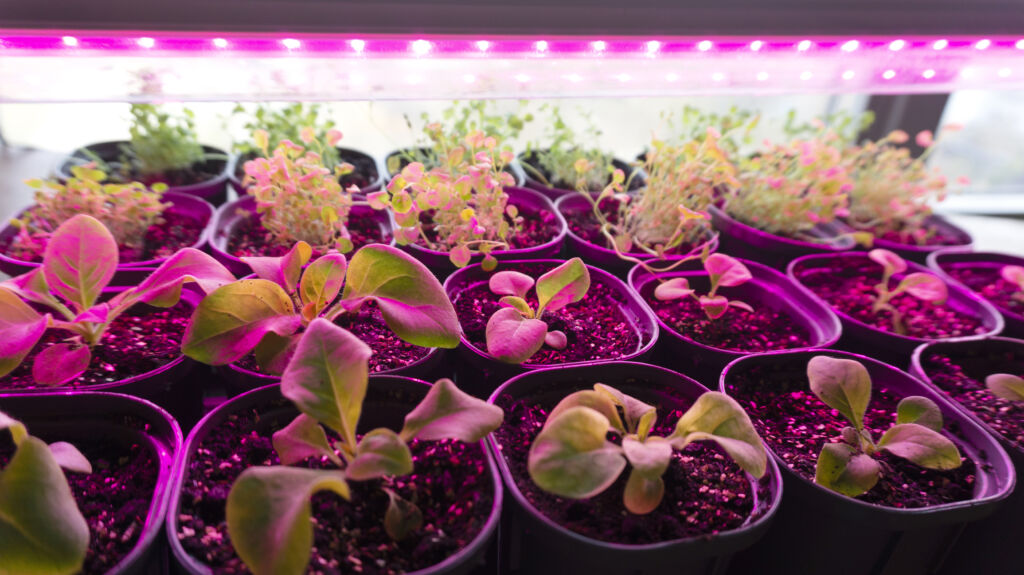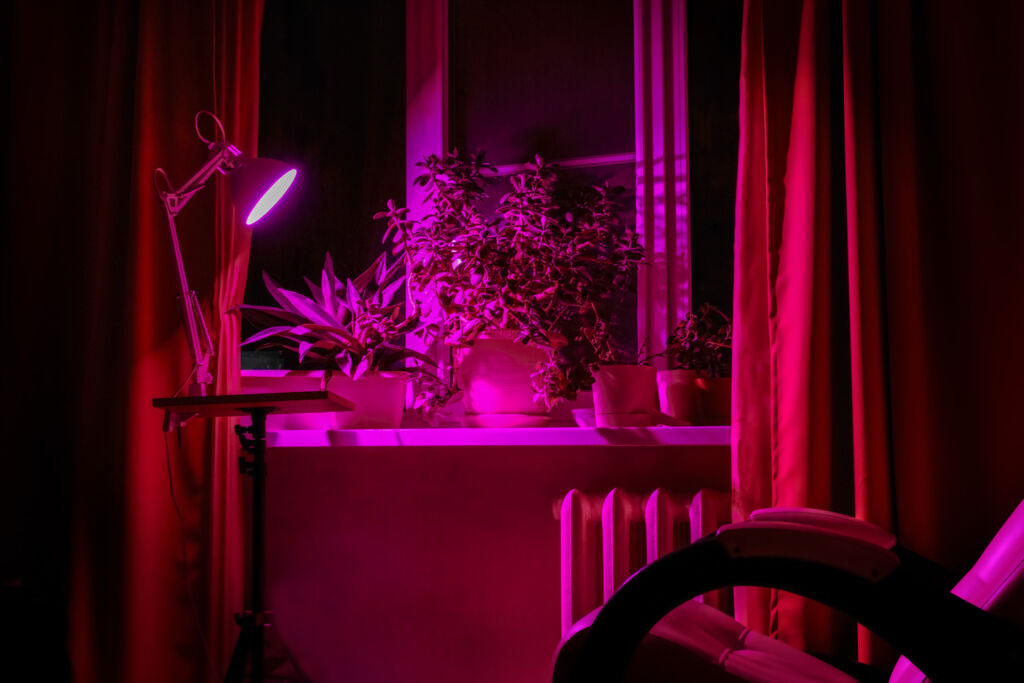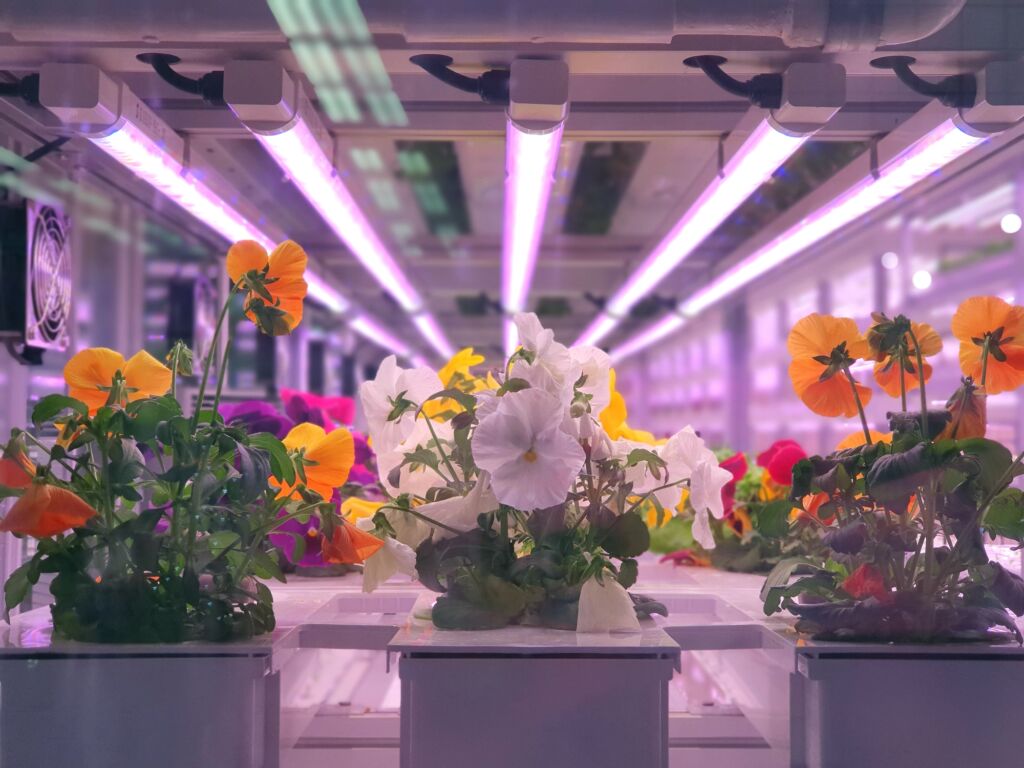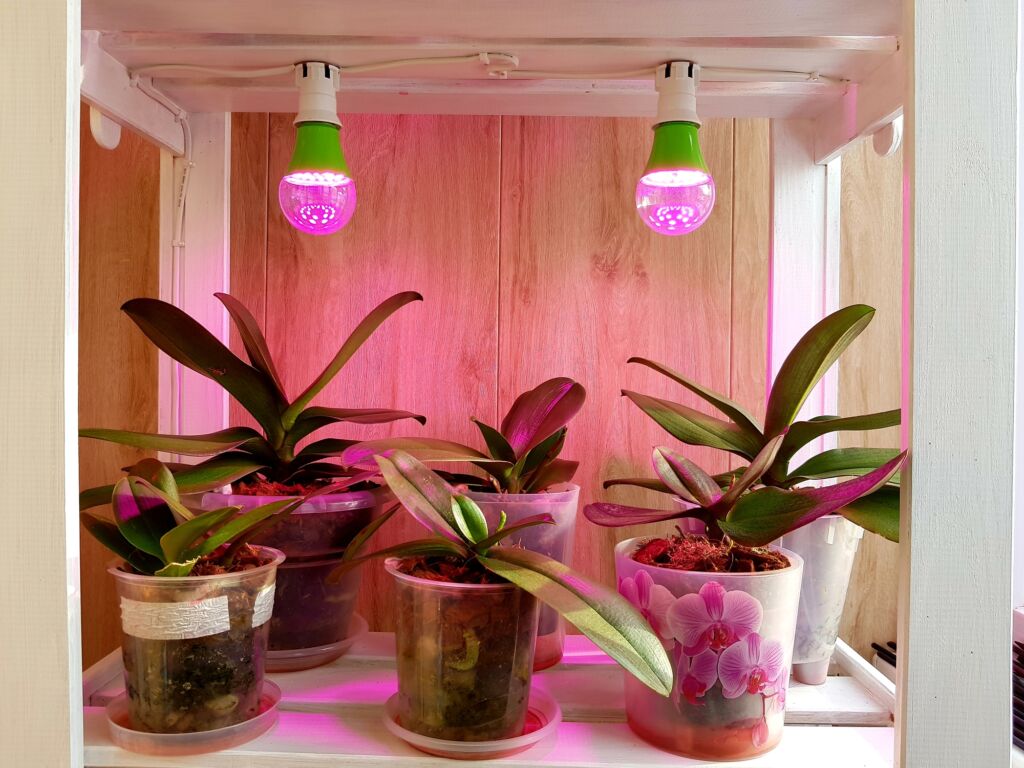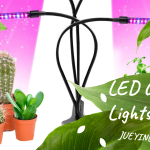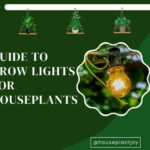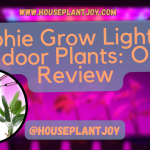HousePlantJoy is supported by our audience. When you purchase through one of our links, we may earn a small affiliate commission. As an Amazon Associate I earn from qualifying purchases. Your cost is not affected.
==================
Supplemental lighting (indoor plant light) is essential for keeping your houseplants, seedlings, and herbs thriving. Here’s our guide to grow lights.
Even though the light is one of the essential factors for all plants to grow healthy, the amount they need vary greatly. For instance, if your low-light houseplants sit near a sunny window, they will do just fine. However, some houseplants are more demanded and need brighter, more consistent light.
Indoor Plant Light
Similarly, if you are starting veggie seedlings, coaxing a blooming plant to produce flowers, or raising fresh herbs, you will need indoor plant lights, also called grow lights.
Our guide to grow lights covers everything, including how to use grow lights, different types, as well as what plants needs grow lights to thrive indoors.
So, let’s get started!
What are Indoor Plant Lights (Grow Lights)?
Grow lights are your best option for indoor gardening, horticulture, and plant propagation. Indoor plant lights enable us to grow various houseplant species indoors regardless of the season or available sunlight. Grow lights use a specific ratio of wavelengths, usually in the red or blue spectrum. These spectrum are suitable and assist your plant’s photosynthesizing.
Indoor Plant Grow Light
Notwithstanding the above, the effectiveness of your grow lights depends on a few factors:
- The intensity of the light is called photosynthetic photon flux density (PPFD).
- How much sunlight are your houseplants getting (like if they are in a dark corner versus on a windowsill!)
- The spectrum of light or also known as photosynthetically active radiation (PAR).
- The proximity of the lamp to the houseplants.
- The time of the year your plant “thinks” it is based on supplemental light.
Before we talk about how to use grow lights, let’s explore how they work.
How Do Indoor Plant Lights (Grow Lights) Work?
Unfortunately, while standard light bulbs are excellent for keeping our homes nice and bright, they don’t do any good to our houseplants. That’s because houseplants need a specific type of light to grow. On the spectrum of visible light, ideal wavelengths for photosynthesis take place in the blue range (425-450 nanometers) and the red range (600-700 nanometers). On the other hand, traditional bulbs’ light stays right in the middle (500-700 nanometers).
Indoor Plant Light
Moreover, while red light help houseplants to bloom, blue light is beneficial for structural and vegetative growth. However, these lights are essential for maintaining balanced, healthier plant growth. Indoor plant light provides houseplants with the type of light they want for photosynthesizing. They can emit specific wavelengths or mimic the sun’s full light spectrum.
Benefits of Indoor Plant Lights
Before knowing how to use grow lights, it is essential to understand how they benefit our houseplants.
-
Energy Efficient
An indoor plant light consumes less energy than regular light. Grow lights use up to 17% less energy than traditional lights; they can help you save money and put a significant dent in your electricity bills.
-
Grow Houseplants in any Season
You don’t need to wait for an ideal growing season to grow your favorite plant. Instead, you can use grow lights and raise your favorite plants regardless of outside weather, and in any season you like.
-
Ability to Control the Amount of Light
One of the benefits of using grow lights for indoor plants is that they let your control the amount of light your plant gets. This factor is crucial since some plants grow well in brighter light while others prefer moderate lighting. You can control the amount of light depending on the plant species you want to grow.
-
Vigorous Growth
Plants that grow under natural light have a slow growth rate. However, if you want to pace up your plant growth, there is no better way than using grow lights. This is because an indoor plant light provides the optimal amount of light your plant needs to grow vigorously.
-
Make Your Plants Bloom
If you have a flowering plant in your home but cannot make it bloom, use grow lights. Remember that flowering houseplants need plenty of light to bloom. In addition, grow lights also help blooms last longer than usual.
Types of Grow Lights
There are four significant types of grow lights:
-
Incandescent Grow Lights
Firstly, there are incandescent grow lights. While they are the cheapest available on the market, these lights are the least energy-efficient. In addition, they have a relatively low light output, so you should not place them too close to your houseplants. Remember that incandescent lights emit more red light than blue.
Plants that you can grow with incandescent indoor plant light include:
- Ferns
- Vines
- Dracaenas
- Snake Plant
- Lucky Bamboo
-
Fluorescent Grow Lights
Secondly, there are fluorescent grow lights. Although these indoor plant lights are more energy efficient, they tend to be expensive. However, these grow lights emit a decent spectrum for houseplants while having a lower heat output.
Moreover, despite their energy efficiency and lower heat output, fluorescent grow lights can be fragile and may only last for a while compared to other grow lights. In addition, these lights are generally sold as tube lights, making them a less convenient option.
Plants that you can grow with fluorescent grow lights include:
- ZZ Plant
- Peace Lily
- Pothos
- Aglaonema
- Aspidistra
-
LED Grow Lights
Thirdly, there are LED lights (light-emitting diodes). They are cost-effective, energy-efficient, and produce an ideal light spectrum for all houseplants. In addition, an LED indoor plant light has a low heat output, meaning you don’t have to worry about placing your plants too close to it.
Plants that you can grow with incandescent indoor plant light include:
- Seedlings
- Herbs
- Fruiting plants
- Leafy greens
-
HID Grow Lights
Fourthly, High-Intensity Discharge (HID) lights are generally used for large-scale commercial growing. They produce an extremely high light output. However, since they are used primarily for large-scale commercial growing, HID grow lights have a high upfront cost.
Since this is a guide to grow lights, let’s discover what indoor plant light is best for your houseplants.
With so many options, choosing an ideal grow light for your plants can be overwhelming. However, LED growth lights are more convenient if you have a residential, small-scale growing system. In addition to their energy efficiency, they are also cost-effective, available widely, and produce an ideal light spectrum for all indoor plants.
What Plants Benefit from Grow Lights?
While many houseplants do not need artificial lighting, most would benefit, especially during limited daylight. A few symptoms that your houseplants struggle with due to lack of light include limited or unbalanced growth, poor or no flowering, and yellow and dried-up leaves.
Here are a few houseplants that thrive under grow lights:
-
Pothos
Pothos houseplants are elegant and versatile and require minimum maintenance and care. You can let the vines cascade down from a high shelf, hang down from a basket, or let them climb up by providing a central stake.
These houseplants are also popular indoor plants with plenty of varieties with variegated colors, different sizes, and tones. All these variations make pothos suitable for various conditions and aesthetics.
However, if you want a variety that can stand out in a dark corner, opt for the “snow queen pothos” with white leaves. Similarly, if you are looking for a more tropical vibe, “silver pothos” with dark-green leaves are a good pick. Pothos will benefit from indoor plant light.
-
African Violets
The African violet is a favorite houseplant among gardening enthusiasts. These gorgeous houseplants will indeed thrive under grow lights. Fascinating varieties of flowers bloom for an extended part of the year if the conditions, including light, are ideal.
-
Orchids
Orchids are one of the most beautiful houseplants that produce stunning flowers in a variety of colors with different petals and sepals sizes. However, these houseplants are a bit more demanding as they need plenty of consistent, good light to bloom. So, having grow lights in place with ideal temperature and humidity will keep your plants thriving and blooming.
-
Succulents
Although many succulent species grow well with the amount of light, they get indoors. They can survive even in low light conditions. Supplementing lights, however, will let them do more than just survive. Especially during the months when the daylight is limited, an indoor plant light is beneficial and will keep your succulents happy.
Now, let’s discuss how to use grow lights.
Where to Place Grow Light?
Remember that the closer your grow light is to your plant, the more light it will get. Ideally, an indoor grow light should be placed no more than a couple of feet from your houseplant to ensure your plant gets plenty of light.
Guide to Grow Lights
Moreover, placing your grow light directly above your plant is generally a convenient option. Remember that placing grow light off to the side can make your plant grow sideways. However, for some houseplants, like trailing plants, putting the light above them is unnecessary since they don’t grow upwards.
How Long to Leave an Indoor Plant Light On?
Learning how to use grow lights is essential to keep your plants happy. Since you are using grow lights indoors, remember that your houseplants need at least 8 to 10 hours of light daily. So, leaving grow lights on for at least 8 hours will mimic the natural light your houseplant is generally exposed to within a day.
In addition, grow lights come with timers which help you automate the process. You can turn on the timer, so you don’t accidentally forget to turn on or off the lights.
Best Grow Lights for Seedlings
Whether you have young plants or newly emerged seedlings, full-spectrum lights are ideal for healthy growth. This type of light emits both blue and red wavelengths, which is a plus for growth and flowering. In contrast, fluorescent and LED indoor plant lights can work too, but they are a bit pricey.
Best Grow Lights for Seedling
Moreover, place your grow light within six inches of your plant foliage for optimal results. You can also suspend the fixture chains or elevate your houseplants on a table for easy movement. Furthermore, remember to gently wipe down your lights to remove dust so they can work efficiently.
Best Grow Lights for Flowering Plants
Red light waves are beneficial if you want to grow fruits indoors or make your plants bloom under artificial lighting. We recommend shopping for LED bulbs and fixtures specifically designed for growing plants indoors. These ultra-bright lights are highly beneficial for houseplants native to sunny, dry climates like rosemary, citrus, cacti, and geranium.
Best Grow Lights for Flowering Plants
Moreover, give your flowering and fruiting plants at least 16 hours of light daily. We highly recommend placing the light source at least 12-15 inches away from the foliage for optimal results.
Tips for Using Grow Lights
Succeeding with indoor plant lights is a process of trial and error. So, keep patience, have fun, and don’t discourage too quickly. Here is our guide to grow lights so you can succeed:
-
Choose Bulbs Wisely
It is essential to figure out what you plan to do with grow light before you shop for it. Remember that expensive grow lights may need to be on a fraction of the time compared to cheaper lights. Getting some really bright grow lights is beneficial if you plan to grow seedlings. However, for low-light plants, getting that $30 lamp and placing it in the window might supplement adequate light.
-
Place the Light Source Closer
The closer you put the light source, the more your plant will get. While it varies by the lamp, keeping your light six inches is a good rule. On the other hand, if your lamp is a couple of feet away, the light intensity will decrease dramatically. If you are using a bank of lights, you can hang them on adjustable chains for easy movement.
-
Keep the Timer On
Some houseplants prefer consistent indoor plant light. So, if you have a houseplant with day-length sensitivity, providing it with eight-hour one day and then fifteen-hour the next day might be confusing. So, it is best to automate the process by turning on the timer.
-
Research How Much Light Each Plant Needs
Think of your plant light requirements as filling up a bucket. That bucket fills with photos; how fast it fills depends on the light intensity. Most plants have small buckets, except lettuce, fruit, and ripening tomatoes, as they have big buckets. Similarly, most herbs need plenty of full sunlight.
-
Mimic the Day Length Your Houseplants Are Used to
While it doesn’t matter for all, it is for some houseplants like basil. Houseplants that thrive in temperature regions know what month it is based on the night length. It means some of these plants do different things, such as flowering or stopping flowering, based on the light they get.
-
Watering is Essential
It’s a bluff that succulents don’t need ample water. Usually, they need to get adequate sunlight to use all the water. Similarly, ensure to keep the seedlings evenly moist. If you notice a stretch with lots of space between the leaves, they want more light.
Wrapping Up
So, that’s our guide to grow lights. Closer to home, on our coffee tables and windowsills, we are becoming even more fascinated with beautiful houseplants. Growing these little green companions indoors offers many benefits, such as reduced stress and anxiety, improved focus, and productivity. However, it is also worth remembering that our houseplants love getting some light so they can grow healthy. Knowing how to use grow lights will help you keep your plants happy. We sincerely hope our guide to grow lights will help you decide what grow light is best for your plants so you can bring more nature indoors.
You Might Also Like the following:

